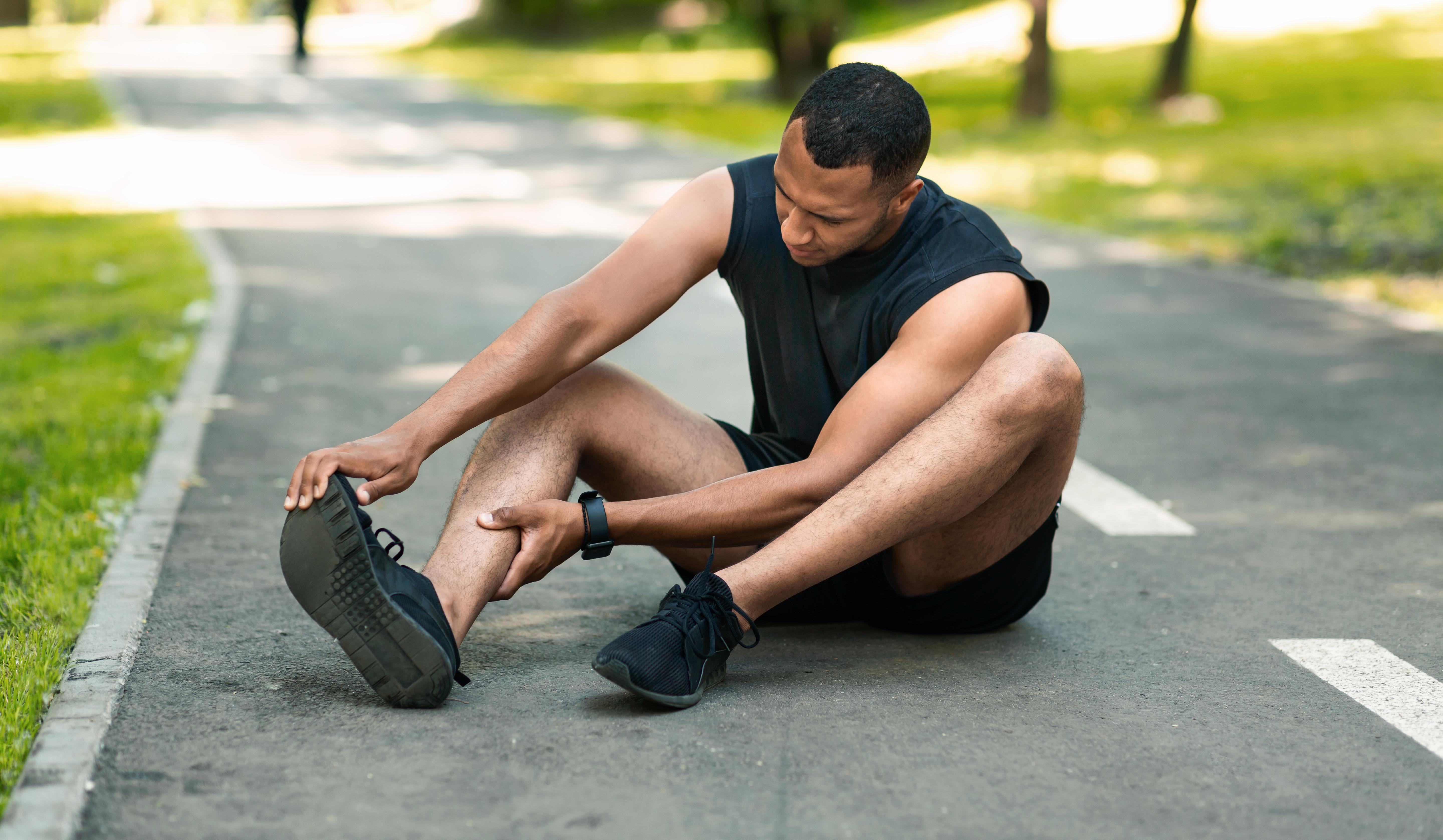Achilles tendon pain
What is Achilles tendon pain?
The Achilles tendon is the large tendon at the back of the ankle, and connects the large calf muscles to the heel bone. Just like joints, the Achilles tendon is also subject to ‘wear and tear’ or ‘degeneration’ and can result in an Achilles tendinopathy.
What causes the condition?
Achilles tendinopathy is a condition that causes pain, swelling and stiffness of the Achilles tendon. It is thought to be caused by repeated tiny injuries (known as micro-trauma) to the Achilles tendon. After each injury, the tendon does not heal completely, as should normally happen. This means that over time, damage to the Achilles tendon builds up and Achilles tendinopathy can develop. Anything which places increased stress on the Achilles tendon can cause symptoms including the following:
• Overuse of the Achilles tendon. This can be a problem for people who run regularly, dancers and for people who play a lot of tennis or other sports that involve jumping
• Being overweight
• Training or exercising wearing inappropriate footwear
• Having poor training or exercising techniques - for example, a poor running technique
• Making a change to your training programme - for example, rapidly increasing the intensity of your training and how often you train
• Training or exercising on hard or sloped surfaces
• Certain types of arthritis, such as ankylosing spondylitis or psoriatic arthritis. It is also thought that your genetic 'makeup' (characteristics inherited from your parents), may play a part for some people who develop Achilles tendinopathy
What are the symptoms of Achilles tendinopathy?
People usually complain of pain and stiffness up the back of the ankle, especially in the morning. The symptoms normally start gradually, and pain typically occurs whilst running or walking, especially up-hill or on stairs, and subsides with rest. The tendon may feel hot and swollen, and may feel lumpy to touch.
There are two types of Achilles tendinopathy:
• Non-insertional: when pain, weakness and loss of function is associated with swelling in the main portion of the tendon and not at the bottom by the heel bone
• Insertional: when pain, weakness and loss of function are associated with a swelling at the bottom of the tendon by the heel bone
Sometimes the heel bone can be quite prominent and very painful. This can be caused by Achilles tendon degeneration, bone spurs (bony lumps), or inflammation of a small bursa (the fluid filled sac behind the tendon), known as bursitis.
Diagnosis and treatment
How is Achilles tendinopathy diagnosed?
Your consultant will perform an examination and you’ll have an X-ray or MRI scan to determine if you have the condition, as well as other factors such as bursitis, which may contribute to pain at the base of the heel.
Non-surgical treatment: anti-inflammatory drugs, heel lifts, stretching and shoes that do not provide pressure over this area. If symptoms persist, appropriate orthotics and physiotherapy therapy may be of benefit, and in some cases, shockwave therapy may also be recommended.
Non-insertional (mid portion) surgery: those who have persisting pain due to Achilles tendinopathy, that has not responded to other treatments, might be advised by their consultant to have surgery. Most people have a good result from surgery and their pain is relieved. The procedure involves either of the following:
• Removing nodules or adhesions (parts of the fibres of the tendon that have stuck together) and have developed within the damaged tendon
• Making lengthways or multiple small cuts in the tendon to help to stimulate and encourage tendon healing.
Insertional surgery: your consultant will remove the degenerative portions of the tendon, any bone which is irritating the tendon and any inflamed bursa tissue. If the tendon is short, then lengthening may also be necessary. The tendon attachment to the heel bone may need to be strengthened with sutures that attach directly into the bone.
How long is recovery after both of the surgeries?
After surgery, a plaster cast is worn for two weeks often in a toe-down position to allow wound healing. Once the wound begins to heal, weight bearing in a cast or boot in a toe-down position commences. Physiotherapy is usually started from six weeks. Post-surgery rehabilitation/physiotherapy will depend on the amount of detachment of the tendon at the time of surgery.
When can I return normal activities?
• Work – if your job is mostly sitting, you may be allowed back to work four weeks following surgery, provided you can keep the leg elevated. However, if your job is more physical and involves long periods on your feet then it may take longer
• Driving – if you have an automatic car and undergone surgery on the left foot, you can usually drive by two weeks after your operation Otherwise, it may take about three months to be able to drive. In order to be safe to drive, you must be able to perform an emergency stop
• Walking - most people aim to be walking independently three months after the operation. However, this depends on your walking tolerance before the operation and your progress following
• Exercise - resuming sporting activity depends on your operation and will be discussed with you. Generally, you can return to low impact sports approximately three to six months after your operation, but it may be as much as one year before you are fully recovered
• Footwear - it can take several months for swelling to go down, but most people can wear normal footwear by six months

